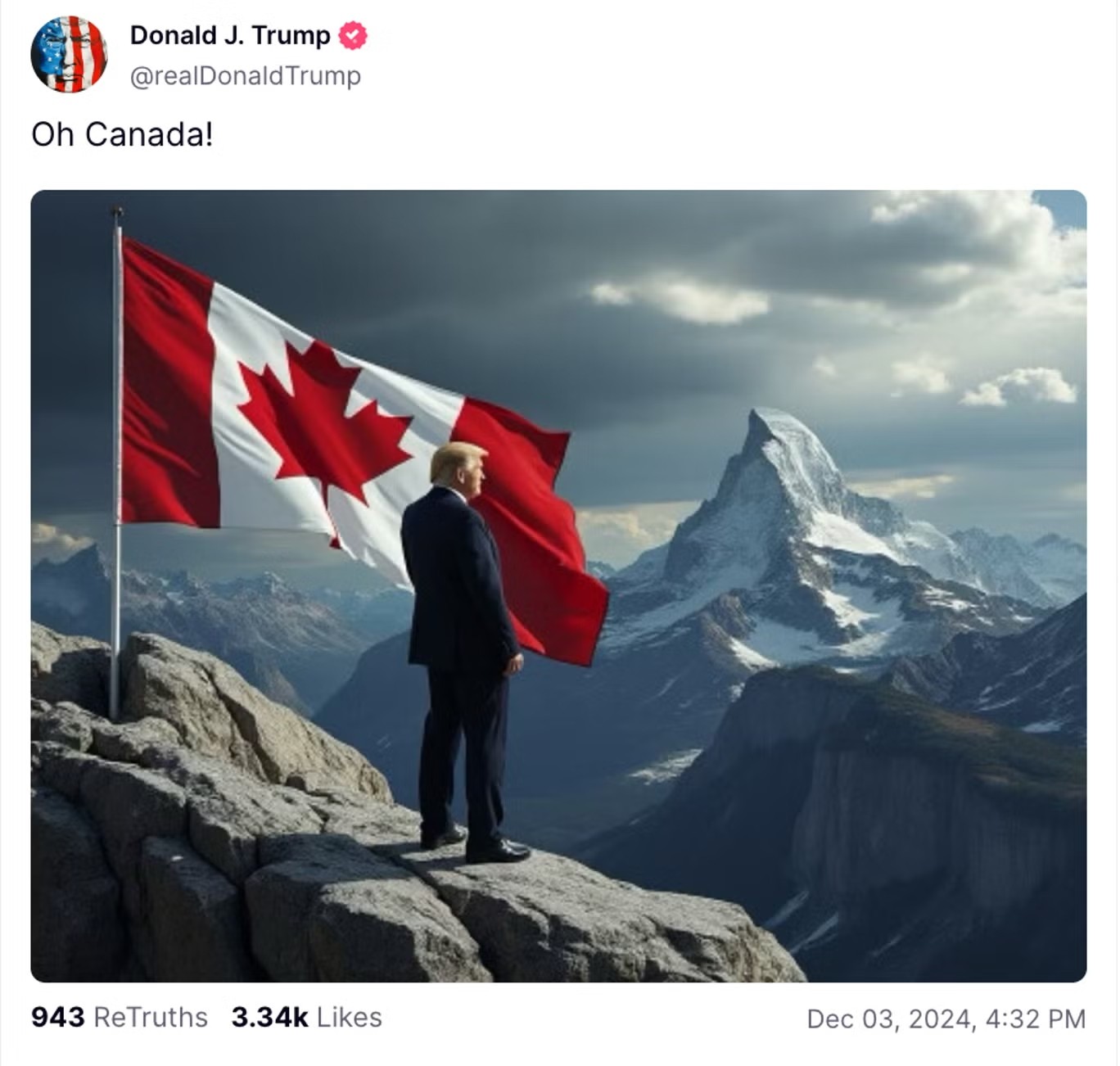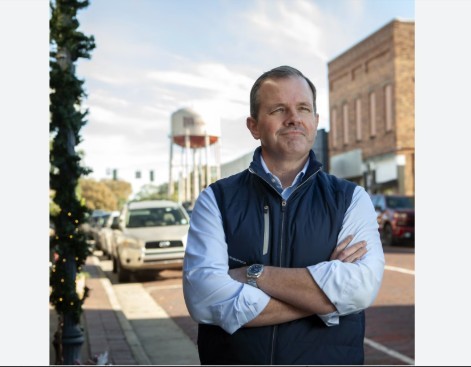What Is the Capital of Canada: History, Best Places to See and Facts
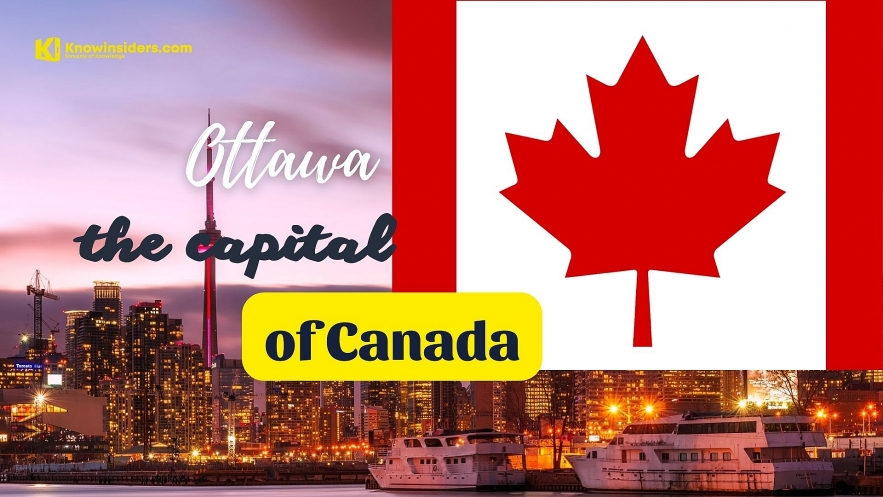 |
| What Is The Capital of Canada: History, Best Places to See and Facts. Photo: knowinsiders. |
What is the Capital of Canada?
The most common cities people associate with the country are usually Vancouver, Toronto and sometimes Montreal due to the French influence. Surprisingly, none of these cities are the capital of the country despite being internationally relevant.
How much do you know about Ottawa? Let’s start with the basics, including history, best places to go and frequently asked questions and facts about the capital of the Canada.
*****
History of Ottawa
According to Run Ottawa, the origin of the name “Ottawa” is derived from the Algonquin word adawe, meaning “to trade”. In the early 19th century, the town grew primarily through the construction of the Rideau Canal project and the booming timber trade. By this time, the Alqonquin People had lost much control of the river and land to the government of Lower Canada, who refused to recognize them, and proceeded to survey and patent lands without consideration of Indigenous claims.
Before it was incorporated as the City of Ottawa in 1855, the town was known as Bytown. Named after Colonel John By, who headed the construction of the Rideau Canal, Bytown was divided into two parts: Upper Town (West) and Lower Town (East), which were connected by Sapper’s Bridge (now Plaza Bridge)—runners of the Ottawa Marathon and Ottawa 5K cross the bridge over the Rideau Canal early in both races.
Lower Town consisted of French Canadians and Irish Catholic immigrants, who were labourers in the, very dangerous, construction of the Rideau Canal. Upper Town held the English and Scottish who were self-appointed governors of the town. As the canal project came to a close (1832), French Canadian and Irish Catholic struggled for new work to support themselves, and the challenges in Bytown arose quickly. The fear of job loss caused gangs to form and attack timber operations and political institutions. And so began Shiner’s War (1835 to 1845).
Shiner’s War involved violent fights between the French Canadian and Irish, ending in riots, injury and death. These early years before Ottawa became a city were hard, disease-ridden and threatening for its citizens. The Bytown Challenge is an acknowledgement of the hardships the early settlers went through to create the Nation’s Capital.
The Bytown Challenge logo and medal is symbolic of the Bytown labourer. The pike-pole, a ten to fourteen-foot long pole with two steel hooks was used to control wood in the Ottawa River, where logs flowed and were milled at Chaudière Falls.
| Canada’s current population is 37.74 million people. The population is growing at a steady pace and, based on current projections will surpass 50 million by 2070. Canada has one of the fastest growth rates of any G7 nation, growing faster than many other industrialized countries. Canada’s growth rate has been anywhere between 0.8% and 1.2% for the past ten years, as World Population Review reported. While Canada’s fertility rate is 1.53 births per woman, below the population replacement rate, the population continues to grow as migration plays an increasing role in the population. Canada’s net migration rate is 6.375 per 1,000 people, the eighth-highest in the world. Unlike many other countries, Canada is “underpopulated” and celebrates a growing population. There are many job vacancies to be filled and more people means more economic growth and prosperity for Canada. |
Why Was Ottawa Chosen?
While Canada is a relatively young country, the capital has been decided for a while now. In 1857, there were a few cities competing to be the capital city. To settle it, Queen Victoria chose Ottawa. Her choice of Ottawa—a fairly small and newly incorporated city—surprised many. Why did she do this?
According to eTA Canada, there are old folk tales about how she made the choice: that she did so by sticking her hatpin on a map roughly halfway between Toronto and Montreal, or that she liked watercolours she had seen of the area. Whilst this is a fun image of the events, there were some political and economic reasons behind it.
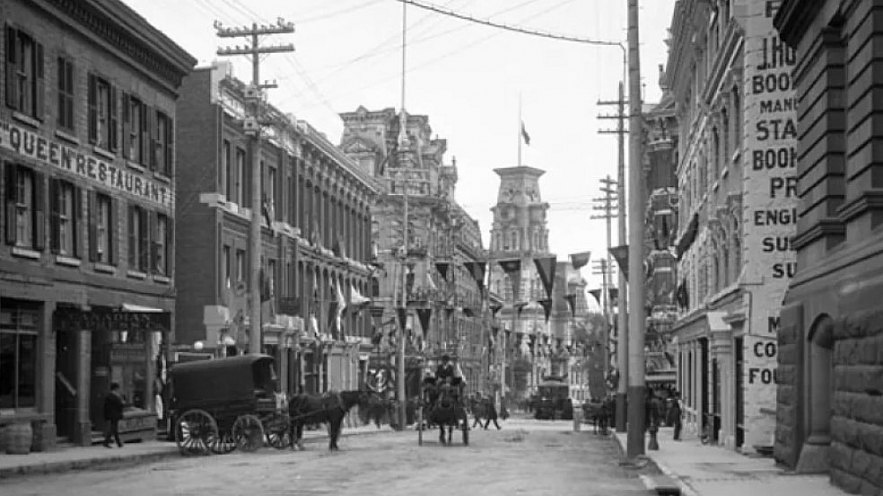 |
| Elgin Street around 1903. The ornate tower seen in the distance is part of Ottawa City Hall which stood on the present site of the National Arts Centre. The building was destroyed by a fire in 1931. (Library and Archives Canada/PA-011826) |
Ottawa had a lot of promise: it was starting to experience economic growth and was home to an impressive railway system; it also had a long history of trade due to its location near several rivers. Alongside this, it was centrally located between the cities of Montreal and Toronto and was along the border of Ontario and Quebec (the centre of Canada at the time). It was also far from the American border, making it safer from attacks.
The story of being halfway between Toronto and Montreal may be part of the old folk’s tale but there are political reasons behind it. Toronto and Montreal represented the English and French parts of Canada. These two cities were the largest in Ontario and Quebec, which were at the centre of Canada in the mid-19th century. Picking Ottawa was a good compromise, as the Queen did not want to appear to favour one major city over the other.
But not everyone agreed with the queen’s pick, which led Toronto to remain the capital for another two years followed by Quebec City for another six years. It wasn’t until 1866 that Ottawa was officially designated the capital city of the Province of Canada and began to hold Parliament.
| Population Rank: 38 Growth Rate: 0.89% (119th) World Percentage: 0.49% Density: 4/km² (221st) Land Area: 9,093,510 km² The current population of Canada is 38,278,169 based on projections of the latest United Nations data. The UN estimates the July 1, 2022 population at 38,388,419. |
Best Places to See in Ottawa
Located in southeast Ontario near the Québec border, Ottawa may seem an unlikely choice for Canada's capital when compared to larger cities like Toronto and Montreal. But that doesn't mean it should be ignored. Visit for yourself, and you'll see this city doesn't fall short. It's small yet lively, family-friendly yet nightlife-ready, somewhat chilly yet undeniably cool, as US News reported.
Ottawa is a political and cultural hub that particularly caters to the out-of-towner. Its downtown overflows with jaw-dropping architecture, state-of-the-art museums, funky boutiques and fantastic snack joints that are all easy for you to explore on foot. Plus, this is a city that loves to celebrate, hosting dozens of festivals throughout the year. And while cold weather may seem like a deterrent, a few hours ice skating (or sipping hot chocolate) along the Rideau Canal will transform even the most stubborn summer-lover into a winter buff.
A trip to the capital wouldn't be complete without seeing the following attractions:
Parliament Hill
Canada’s Parliament Hill isn’t just home to the country’s government; it’s also a cultural and community hub whose activities are hosted in an incredible setting. You can, for example, do yoga on Parliament Hill. Every Wednesday at noon during the summer, hundreds of people flood the hill with mats and yoga leggings to stretch out in front of the iconic buildings. You can also take in the Sound and Light show, which for 30 minutes projects a beautiful, engaging story onto the Parliament Buildings themselves. And then there are the more traditional activities. Visit the historic Peace Tower for a 360-degree view of the city and take in the Changing of the Guard, before heading inside for a building tour, as Canadadestination.com reported.
 |
| Parliament Hill. Photo: planetware.com. |
Rideau Canal
The 200-kilometer-long (but only 1.6-meter-deep) Rideau Canal, connects Ottawa with Kingston on Lake Ontario. Sometimes also called the Rideau Waterway, it was originally intended as a strategic route between Montréal and Lake Ontario, the military need for which was demonstrated during the war with the United States in 1812.
In summer, as Planetware reported, the canal and locks are an active waterway. Fun things to do include taking a Rideau Canal cruise aboard one of the many tour boats that ply the water here (better still, splash out on an overnight cruise of the canal!). As soon as it freezes over, though, the canal becomes a recreational area for festivals and skating, one of the favorite things to do in Ottawa in the winter.
Château Laurier is one of the grand buildings on the canal banks. Though it has the air of a medieval castle, it was actually built in 1912 and is a prime example of how big Canadian railroad companies added grand hotels (and striking landmarks) across Canada.
Canada Aviation and Space Museum
Who among us hasn’t thought at some point in our lives about what it would be like to be in space? At the Canadian Aviation and Space Museum, you can take one small step towards answering that question. Discover what life is like aboard the International Space Station from the astronauts who’ve lived there, and see what it’s like to wear a space helmet and climb inside the station. Once you’ve lived that childhood dream, the rest of the museum holds 130 different military and civilian aircrafts that you can explore, as a well as a real, full-motion flight simulator. Come and enjoy all things air travel, without having to worry about your legroom.
Canadian War Museum
Sitting on the shore of the Ottawa River, it’s hard to miss the Canadian War Museum. The museum’s distinct building is largely flat, but shoots up 25m into the air along one side, like a waving hand calling you over. Once inside, you’ll walk through exhibitions that cover Canada’s involvement in conflicts throughout history. A vast collection of tanks, military vehicles, and guns fill the walls, allowing you to see and explore the equipment used by generations of brave men and women on the battlefield. Over 330 works of art and a number of unique touches—like a tall window that frames the Peace Tower on Parliament Hill—round out the experience, and help tell the stories that shaped what Canada is today.
| Each of these cities held the title of capital of Canada for varying lengths of time. Here is a chronology of exactly how the capital city of Canada changed in just two and a half decades: -Kingston (1841-1844) -Montreal (1844-1849) -Toronto (1849-1851) -Quebec City (1851-1855) -Toronto (1855-1859) -Quebec City (1859-1865) -Ottawa (1866-present) |
National Gallery of Canada
The National Gallery of Canada seems to get a lot of attention thanks to a 10m spider statue that sits in front of the magnificent glass building. But once you get past your arachnophobia, the inside of the gallery is an incredible institution of all things art. Nearly 40,000 works cover everything from Inuit sculpture to the very latest in contemporary art. This means that, whether you’re a curious soul with minimal art knowledge or you have a doctorate in art history hanging on your wall, the National Gallery of Canada has work you’ll recognise, appreciate, and enjoy.
Peace Tower
The panoramic view from the observation deck at the top of the Peace Tower (Tour de la Paix), the highest point in Ottawa, encompasses Parliament Hill, the entire city, the river, Gatineau, and the hills to the north. On your way up in the elevator, you will get a look at the tower's bells, and there is a memorial room to Canadians who died in WWI.
While access to the tower - sometimes also called the "Tower of Victory and Peace" - is free, you must first get a ticket. (Check the official government site below for details.). Address: Parliament Hill, Ottawa, Ontario.
 |
| The centrepiece of the Memorial Chamber on Parliament Hill is the main altar, which holds the First World War Book of Remembrance. The altar rests on steps made of stone quarried from Flanders Fields. Photo: tpsgc-pwgsc.gc.ca. |
| Stone carvings Stone carvings of human and animal figures and ancient creatures stare down from the outer walls of the Peace Tower. Although commonly called gargoyles, these stonework figures are properly referred to by various other names—grotesques, reliefs and bosses—depending on the style in which they are carved. |
Nepean Point
This park is famous for its gorgeous view of the Ottawa Skyline and the Alexandra Bridge reaching over the Ottawa River. We highly recommend walking across the Alexandra Bridge to Gatineau. It offers beautiful views of the Ottawa Parliament Buildings, the river and it is a pleasant stroll. The bridge takes you from Ottawa to the grounds of the Canadian Museum of History in Gatineau. You can then hop on the ferry to take it back to Ottawa.
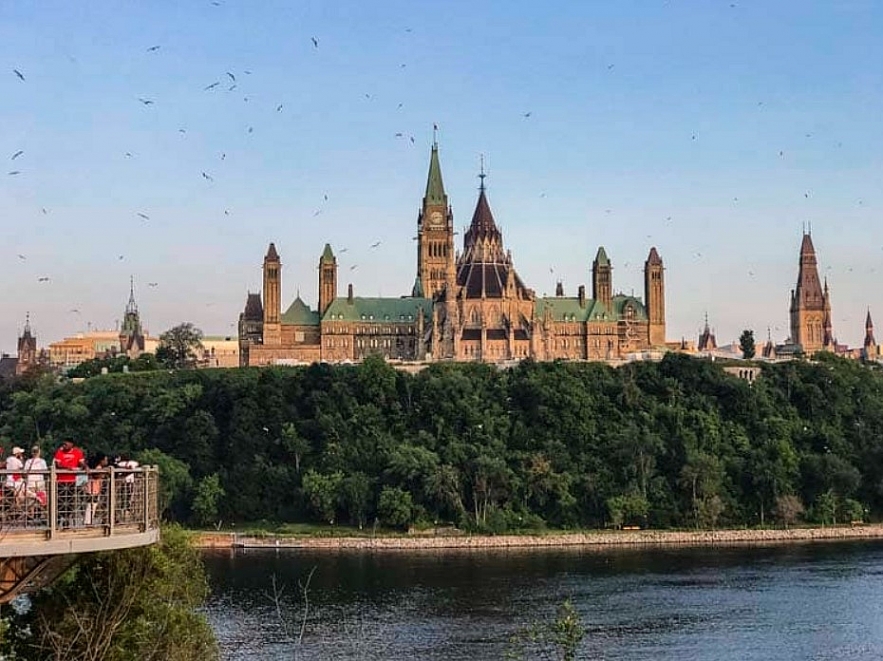 |
| Photo: theplanetd.com. |
ByWard Market Neighborhood
For nearly two centuries, farmers, and craft merchants have taken to the ByWard Market to share the fruits (literal and metaphorical) of their labour. What was once a simple market has turned into a hub of food, shopping, and entertainment. Over 260 stands fill the market, while more than 500 businesses call the surrounding neighbourhood home. On any given visit you might stumble across a great spot for your next brunch, a quirky boutique full of gift inspiration, or an up-and-coming local band drawing in a crowd. Close to Parliament Hill, the ByWard Market Neighbourhood is always alive with activity, morning and night. Make sure you stop by.
Interesting Facts about Ottawa
Here are some interesting facts about Ottawa, according to geosottawa and ottawaroadtrips:
- Ottawa is the seventh coldest capital in the world. Others that are colder include in order of coldest first are Ulaan-Baatar in Mongolia, Astana in Kazakhastan, Moscow, Helsinki, Reykjavik in Iceland and Tallin in Estonia.
- In winter, the Rideau Canal in downtown Ottawa, becomes the longest skating rink in the world (7.8 km).
- There are 4 distinct seasons, though, with temperatures ranging from 33C in summer (average is 25C) to -25C (average is -10C).
- Nearly half the population is under the age of 35 – making it one of the youngest cities in the country.
- There are more than 14 museums in Ottawa, but the Canadian Museum of Civilization is the most visited museum in Canada.
- There are 35 major festivals in Ottawa. The Canadian Tulip Festival, held every May, is one of the most famous.
- The beautiful Château Laurier Hotel is said to be haunted by the ghost of Charles Melville Hays, the president of the company that built the hotel. Hays died on the Titanic, 12 days before the hotel's opening.
- Visitors to Ottawa can stay in a hostel that used to be a jail in the 19th Century.
- Ottawa has the most educated population among Canadian cities and is home to a number of post-secondary, research, and cultural institutions, including the National Arts Centre, the National Gallery, and numerous national museums.
- Ottawa has the highest standard of living in the nation and low unemployment.
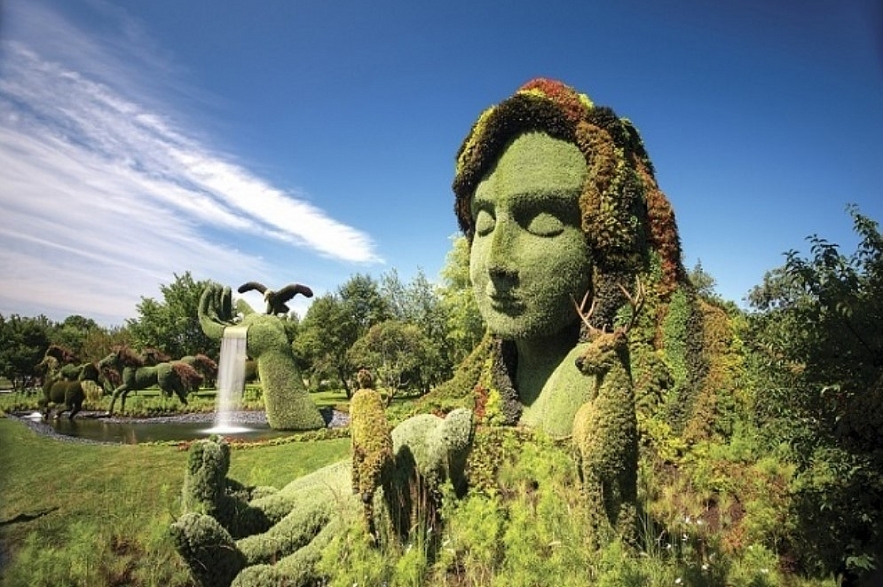 |
| Photo: Visitottawakansas.com |
- A secret garden helps wildlife: Tucked away in a corner of the Central Experimental Farm is the Fletcher Wildlife Garden. Volunteers from the Ottawa Field-Naturalists’ club began work on the garden in 1990. Today, you can visit to learn about plants native to the Ottawa area and to find out how to create a chemical-free home garden that’s friendly to bees, butterflies, chipmunks, birds and more—even bats! You can wander along trails and check out the amphibian pond, too (be careful not to disturb the snapping turtles).
- Ottawa is home to Canada’s only Le Cordon Bleu cooking school: One of the world’s most famous cooking schools, Le Cordon Bleu was founded in Paris in 1895. It now has campuses in cities all over the world—including Lima, Istanbul, Melbourne and Shanghai—to teach students everything from knife skills to the secrets of a perfect baguette. The Ottawa institute, the only Le Cordon Bleu in Canada, is housed in an 1874 mansion on Laurier Avenue East in Sandy Hill. The one-time private home also served as a Second World War military residence, a university dorm and a private gourmet club before being converted to its current use in 2000.
| Frequently asked questions about Ottawa travel When to Visit Ottawa? Cold weather and snow makes Ottawa a less popular destination during the winter months between December and February, but it's the best time to find travel bargains. Winter sports are popular in the area, which means it's never off the tourist map. Spring and summer are the most popular times for tourists, coinciding with numerous outdoor festivals and events that take advantage of the scenic landscape. What are some free things to do in Ottawa? Ottawa has a lot of free activities, from skating on the Rideau Canal, touring the Byward Market to touring parliament hill and even museums are free at a designated time. What is there to do in Ottawa at night? Our favorite things to do at night in Ottawa is to go up to have a cocktail at the rooftop bar of the Andaz Hotel, go bar hopping at the ByWard Market and grab a drink at the Whales Bone. What are some adventurous things to do in Ottawa? Ottawa is filled with adventure from SUP on the Gatineau River to Whitewater rafting the Ottawa River. |
 Top 10 Most Beautiful & Hottest Canadian Actresses in 2022/2023 Top 10 Most Beautiful & Hottest Canadian Actresses in 2022/2023 Canadian women, especially beautiful actresses of Canada, are famous for their charming personalities around the world. We rounded up the top 10 most beautiful and ... |
 Watch Live Super Bowl In UK, Canada, Australia, New Zealand and America Watch Live Super Bowl In UK, Canada, Australia, New Zealand and America How to watch Super Bowl 2022 free live stream online in the US, UK, Canada, Australia, New Zealand ect: Top Best Channels, Networks and Trials ... |
 How Many Prisons Are There In Canada: Inmate Population, How to Suffer How Many Prisons Are There In Canada: Inmate Population, How to Suffer How Many Prisons Are There In Canada? What Is Prison Population Across The Country? How Prisoners In Canada Suffer? Find out the answers in the ... |



